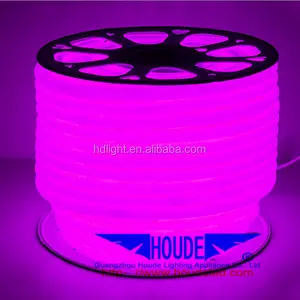LED lights have significantly impacted the lighting industry in recent years. These energy-efficient devices offer several advantages over traditional lighting options, making them a great choice for various applications. What are LED lights' benefits, and why are they becoming the go-to choice for many homeowners and businesses?
Advantages of LED lights
LED lights last much longer than traditional lighting options. Their lifespan is 50 times that of incandescent bulbs and 10-20 times that of fluorescent bulbs. These LED lights for bedroom give it a comfortable and well-lit atmosphere.
LED lights are also incredibly energy-efficient. They consume significantly less power than traditional lighting options, using up to 90% less energy. It makes them an excellent choice for those who want to reduce their carbon footprint and save energy costs. There are various options to illuminate the room with LED color-changing lights. These lights can change colors to suit the mood or the occasion, adding a fun and unique element to the space.
A unique feature of LED lights strips is their cool touch. It makes them safer for use in children's rooms or anywhere heat-sensitive objects or people may be found. The outdoor LED lights can be easily installed along the edges of the ceiling or walls, creating a stunning visual effect that will transform the space into a relaxing and cozy retreat.
One of the best features of LED lights is that they are dimmable. It means that it can adjust the brightness of the lights to suit the needs or create a specific ambiance. It makes them great for residential or commercial settings where mood lighting is desired. It can set the ideal ambiance for any room in the home by adjusting the brightness and color of the LED lights. Whether relaxing in a cozy atmosphere or feeling more energetic, the dimmable LED lights will help achieve great lighting for any occasion.
Materials for LED lights
The LED lights are composed of various materials that work together to produce light efficiently. The heart of an LED light is the LED chip itself, typically made of a semiconductor material such as gallium arsenide or gallium nitride. These materials, when properly doped, emit light when an electric current passes through them. The LED chip is mounted on a substrate, which provides mechanical support and helps dissipate heat. Common substrate materials include ceramic, aluminum oxide, or aluminum nitride. The LED chip is encapsulated in a transparent or translucent material to protect it and provide optical control. Most commonly, epoxy resin or silicone is used as the encapsulation material. Other materials include phosphors, reflectors and optics, electrical connections, heat sinks, and driver circuits. These materials work in conjunction to create energy-efficient and long-lasting LED lights. The specific materials used may vary based on the application, performance requirements, and cost considerations.
LED lights are made from a solid-state material, making them more durable and less susceptible to damage than traditional lighting options. It makes them an excellent choice for rooms with heavy traffic, pets, or children. These lights are great for patios, gardens, or walkways, adding a touch of style and safety to the outdoor area.








































 浙公网安备 33010002000092号
浙公网安备 33010002000092号 浙B2-20120091-4
浙B2-20120091-4